To meet changing patient needs, healthcare professionals must reshape internal processes, implement new technology, and upskill workers.
This requires organizations to develop a change management strategy that can be successful, scale, and support organizational-wide initiatives and the end-users most impacted by the change. But what does this actually take in a high-stakes space?
In this article, we’ll break down what change management in healthcare is. Plus, we’ll show you examples and strategies to bring change management to your organization.
What Is Change Management in Healthcare?
Healthcare change management provides preparation, training, and post-implementation support for healthcare workers and patients during times of change. This may include switching EHR systems, launching a new bill process, changing how appointments are scheduled, restructuring of healthcare staff organizational structure, acquisitions or mergers, and so forth.
Research shows that a significant problem specific to healthcare is that almost two-thirds of all change projects fail for many reasons, such as poor planning, unmotivated staff, deficient communication, or widespread changes.
Change management is more than introducing new tools or processes. It’s a strategy that ensures that changes are adopted smoothly. Often, changes happen gradually and with minimal disruption.
Effective change management in healthcare requires:
- Strategic planning
- Stakeholder engagement
- Using change management models to facilitate change adoption
- Change communication
- End-user training and support
- Monitoring and evaluation
- Cultural adaptation
Examples of Healthcare Change Management
Want to understand the scope and impact of change management in healthcare? Take a look at these examples.
1. Implementation of electronic health record (EHR) systems
Digital transformation in healthcare has evolved paper-based records into enterprise electronic health record (EHR) systems that hospitals and providers rely on for day-to-day operations. This shift, which makes up a large part of modern healthcare, requires careful planning and execution. Patient data must be accurately transferred. Workflows should also be optimized for new technology.
For example, Epic is a full-stack electronic medical records platform that does it all. Whether you’re a one-person practice or a medical director at a university hospital, Epic makes it easy to manage your entire medical workflow inside one source of truth.
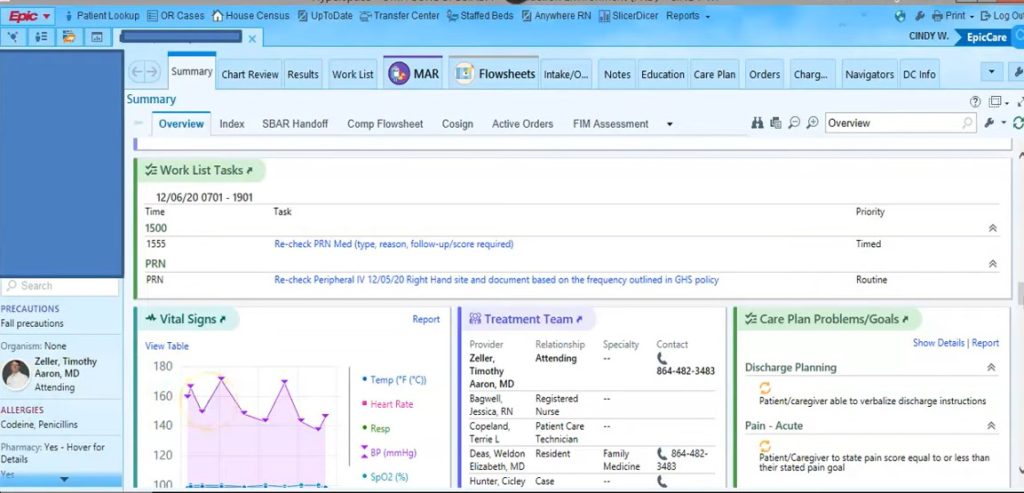
2. Transition to telehealth services
The COVID-19 pandemic accelerated the adoption of telehealth services. But today, it’s an expectation in healthcare. Organizations have to adapt their processes. They also have to educate their patients.
For example, CVS Minute Clinic Virtual Care is an accessible patient option. This telehealth service allows patients to get virtual care and have their prescriptions refilled within minutes. The service is available 24/7, even on holidays.
3. Adoption of digital patient intake procedures
Many healthcare facilities are moving towards digital patient intake processes. This can streamline operations and improve patient experience. The change involves a shift from traditional paper forms to digital platforms.
For example, WebPT empowers rehab therapists with digital patient intake forms that streamline the patient registration process. This way, once new patients arrive, they’ll spend less time in the waiting room.
Change management strategies for this transition include creating user-friendly interfaces for patients. Healthcare organizations must also train front-desk staff to assist patients with the new system.
4. Integration of AI and machine learning for diagnostic processes
The introduction of artificial intelligence and machine learning is changing how healthcare professionals approach patient care. This change requires technical implementation, and employees must know how to use these tools well.
For example, Digital Diagnostics’ AI systems enable disease detection at the point of care, increasing patient access. Their algorithms are developed with insights from leading medical experts and are based on existing clinical practice guidelines.
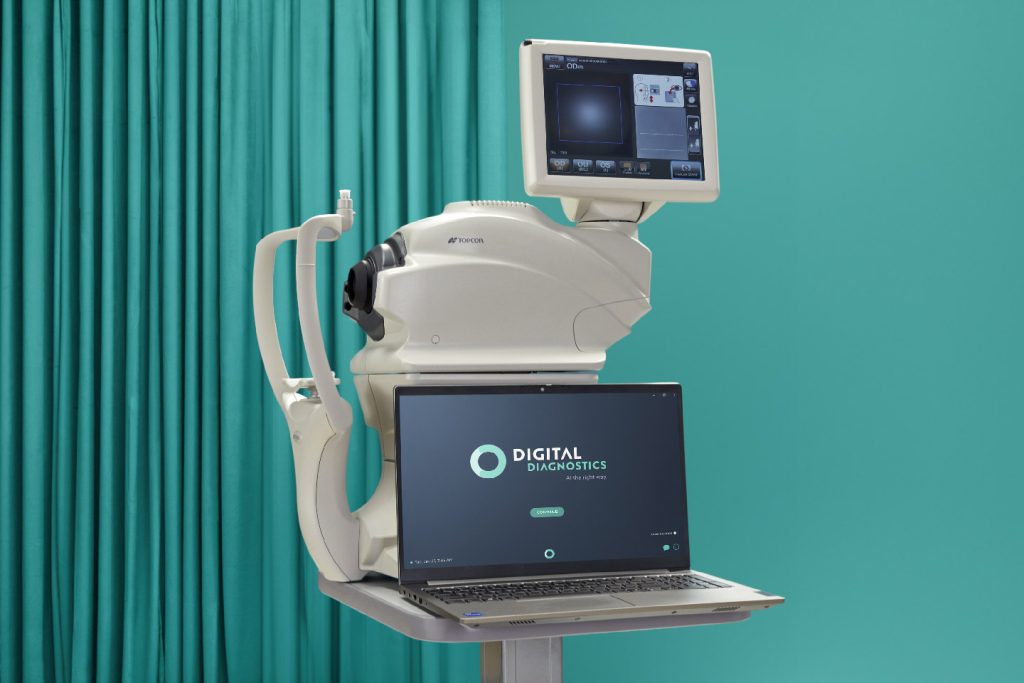
5. Compliance updates due to changes in healthcare regulations
The healthcare industry is subject to frequent regulatory changes. Organizations must adapt their processes to comply. Then, they need to update internal policies to maintain that compliance.
Partnering with Thoropass allowed Medmo to mitigate potential security risks and open the doors to new, larger customers. When healthcare organizations ask for evidence of Medmo’s compliance, reports are always available.
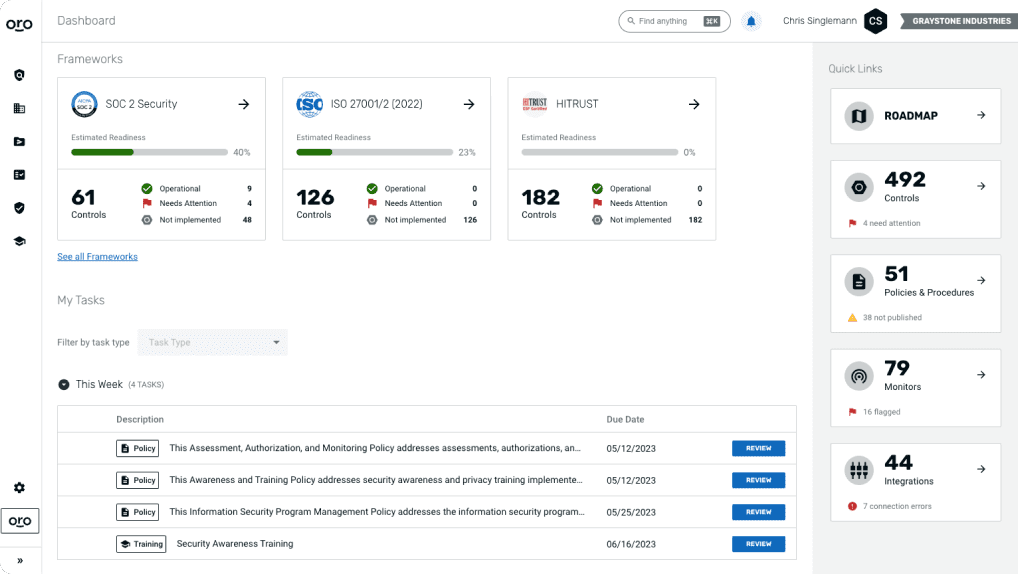
6. Introduction of patient-centered care models
Shifting from traditional, provider-centric models to patient-centered care approaches requires changes that affect every aspect of healthcare delivery. For example, organizations may develop new care protocols that emphasize shared decision-making or adopt patient portals.
AHRQ’s SHARE Approach is a five-step process for shared decision-making that includes exploring and comparing each option’s benefits, harms, and risks through meaningful dialogue about what matters most to the patient.
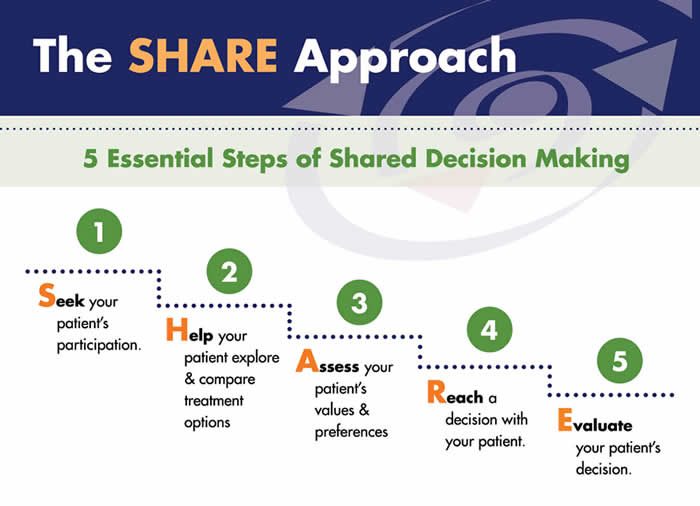
7. Adoption of value-based care models
The transition from fee-for-service to value-based care models changed how healthcare is delivered and reimbursed. This requires organizations to focus on patient outcomes rather than service volume.
For example, the Healthcare Effectiveness Data and Information Set (HEDIS) is one of healthcare’s most widely used performance improvement tools. More than 227 million people are enrolled in plans that report HEDIS results.
8. Rollout of new medical devices and technologies
Introducing new medical devices or technologies is a complex process. Organizations must conduct risk assessments before implementation. They also need clear protocols for device use and maintenance.
The FDA offers a list of the newest medical technology available. For each product, you can find information about the device, how it works, when it can be used, and when it should not be used.
9. Development and implementation of new staff training programs
Organizations must implement new training programs to ensure staff skills remain current. This can involve assessing current skill gaps and future needs. It’s also helpful to consider to encourage a culture of continuous learning.
For example, EHR Go is an educational Electronic Health Record (EHR) and learning platform designed to encourage students to see the holistic nature of healthcare while becoming proficient in its technology. The Go EHR includes 700+ customizable patient cases.
10. Implementation of patient safety and risk management protocols
New technology means new safety concerns. Organizations must be aware of them and have plans to keep patients safe. This includes having clear reporting guidelines in place when issues come up.
ShareFile offers simple, secure file sharing that supports your HIPAA compliance. Healthcare organizations can send files directly from their EMR system into ShareFile’s secure environment.
Related Resources:
5 Strategies for Effective Change Management in Healthcare
What makes healthcare change management work? Use these five strategies for success.
1. Developing clear communication plans to involve all stakeholders
Effective communication is at the core of successful change management in healthcare. A well-structured communication plan ensures that all stakeholders are informed, helping everyone stay aligned throughout the change process.
2. Providing ongoing training and support for healthcare staff
Continuous training and support help healthcare professionals adapt to new systems. This strategy helps build confidence. It can reduce resistance to change and empower individuals to see better results with new technology.
A recent report also suggests hospital education departments should consider collaborating with academic institutions. That may facilitate greater emphasis on the skill sets that healthcare systems currently need.
PRO TIP
With Whatfix DAP, enable your healthcare workers, doctors, and patients with in-app guided experiences and on-demand support to help them use and adopt new healthcare technologies like EHRs and patient portals. Create in-app Tours and Task Lists to onboard new users. Guide employees through contextual workflows and infrequently done tasks with Flows. Use Self Help to provide users with an in-app resource center.
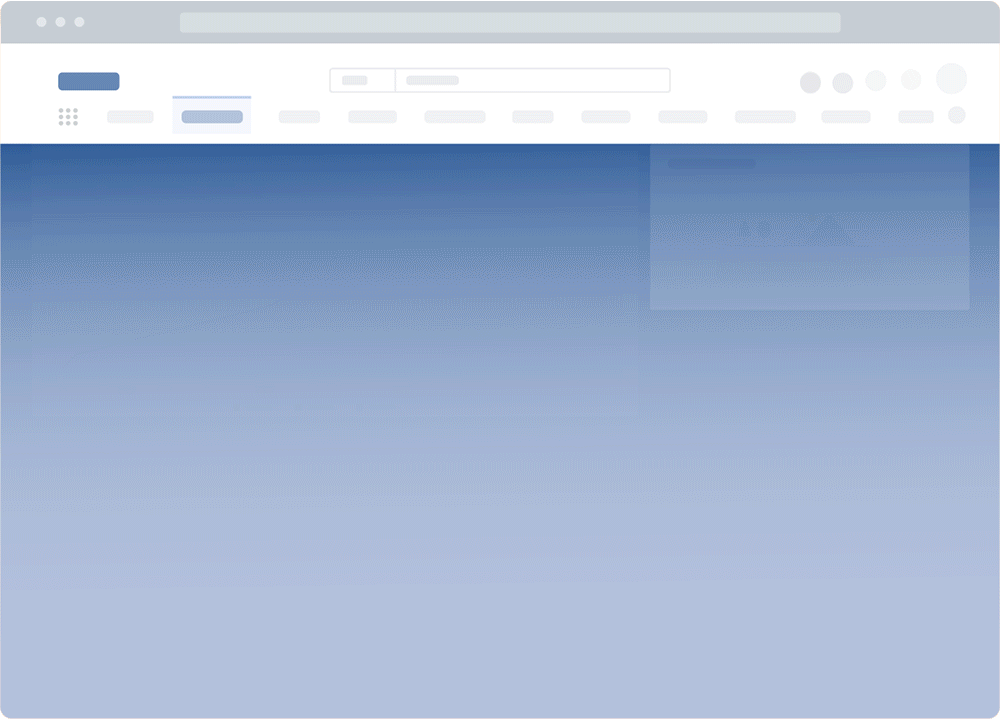
3. Implementing incremental and phased changes to ensure adaptability
Transformational changes can be overwhelming and disruptive in healthcare settings. Implementing changes allows organizations to test and refine them. Phased change approaches enable organizations to launch beta tests, understand their impact, identify friction, and make changes before embarking on the launch for the entire organization. This way, they can make sustainable progress.
4. Establishing leadership roles specifically for managing change
Dedicated change leadership is essential. Leaders coordinate the change initiatives. Team members should have clear responsibilities in these roles. They also need to be able to communicate with stakeholders across the organization.
5. Using evidence-based approaches to support change initiatives
Basing change initiatives on solid evidence helps with credibility. It may also increase the likelihood of success. For example, organizations may analyze existing internal processes to find clear areas for improvement.
Risks of Healthcare Change Management
Change management comes with many opportunities, but it also introduces risk. Here’s what you should know.
- Resistance to change from healthcare professionals: Healthcare professionals may resist changes and have concerns about disruption. You must ensure they understand how the change will help, not hinder them. Perceived usefulness is positively associated with adoption.
- Misalignment of goals among different stakeholders: Different stakeholders may have conflicting priorities, which comes with expectations for change. This can lead to tension and implementation challenges. Get insights from across the organization and get everyone on the same page before making changes.
- Inadequate change communication strategies: Poor communication can lead to misunderstandings and increased resistance to change. Have a plan for precise and consistent communication with a change announcement strategy. Be transparent and keep team members in the loop on wins and struggles.
- Insufficient training and support for new systems or processes: Change requires preparation and ongoing support. Without it, frustration and errors can wreak havoc. All staff should have the necessary resources to understand the new working methods.
- Compliance with changing healthcare regulations and standards: Changing healthcare regulations can make it challenging to implement changes. You need to update systems while ensuring ongoing compliance. You also need to consider how adaptable your tech stack will be in the future.
- Integration of new technology with existing systems: Integrating new technologies with legacy systems comes with many considerations. For example, if the tools you use don’t incorporate, you may have data silos to deal with. Consider how different systems will work together.
- Data security and privacy concerns: Implementing new systems or processes may introduce vulnerabilities. This may compromise patient confidentiality and regulatory compliance. Healthcare IT teams should evaluate any additional risks and have a plan to address them.
- Loss of productivity during the implementation phase: The learning curve associated with new systems or processes can temporarily reduce productivity. That has the potential to impact patient care and organizational performance. You may need additional staff to help you close the productivity gap during this time.
- Ensuring continuity of care during changes: Maintaining high-quality patient care while implementing significant changes takes work. Healthcare is a high-stakes industry with little room for error. Careful planning and resource allocation can make all the difference.
- Difficulty in measuring the impact of change: Determining the true impact of change initiatives can be complex. Lacking outcome data makes it challenging to justify investments. That’s why choosing your key performance indicators and tracking them regularly is important.
Measuring the Impact of Healthcare Change Management
How do you know if your change management plans are making a difference? Consider tracking these key metrics.
Key Performance Indicators (KPIs)
- Patient satisfaction scores: Monitors changes in patient satisfaction through feedback.
- Employee engagement levels: Measures staff satisfaction and productivity after changes.
- Compliance rate changes: Tracks improvements in regulatory compliance.
- Operational efficiency metrics: Analyzes indicators like wait times and resource utilization.
- Reduction in error rates: Monitors changes in medical errors and adverse events.
Feedback Mechanisms for Healthcare Change Management
Numbers only tell half the story. Use these feedback strategies to get more insight from your team.
- Regular staff feedback sessions: Conduct structured feedback sessions with staff at all levels. This will help you gather insights into the change process. It will also make it easier to identify areas for improvement as you consider future goals.
- Patient feedback through digital platforms: Use digital surveys and online portals to collect continuous patient feedback. Focus on their care experience and satisfaction levels. This will help you understand the impact of the changes.
- Real-time monitoring of process changes: Implement systems to track key metrics in real-time. This way, you can adapt as needed. Your team will be able to see what’s working and what’s not as they operate, which makes it possible to fine-tune your processes.
How Whatfix Drives Healthcare Change Management
Wondering how WhatFix can support your healthcare change management goals? Here’s how we can help.
1. Replica sandbox environments for hands-on IT healthcare training
Whatfix can offer realistic, risk-free training environments. Whatfix Mirror enables you to generate a realistic, no-risk software training sandbox environment mirroring your data and workflows. This allows your staff to get unlimited, risk-free practice on the software.

2. Interactive onboarding with Tours, Flows, and Task Lists to simplify the adoption of new software or procedures
Whatfix allows users to create content, including tours, flows, and task lists. Interactive walkthroughs guide users through a product’s core functionality. Flows walk users through product workflows or features. Task lists provide users with a tailored list of in-app flows to complete before proceeding.
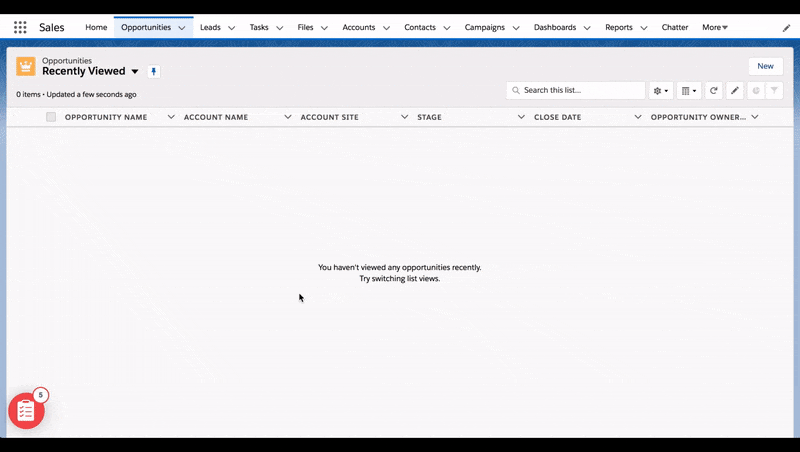
3. Real-time in-app guidance to enable staff to navigate complex new systems during their regular workflow
Whatfix’s interactive in-app guidance tools provide healthcare professionals with step-by-step assistance as they navigate new systems. Whatfix allows you to build tailored, interactive training courses via in-app guidance.

4. In-app communication for process updates or new software features
Whatfix enables healthcare organizations to deliver contextual messages directly in their applications. This ensures that staff are always informed about the latest updates or best practices.
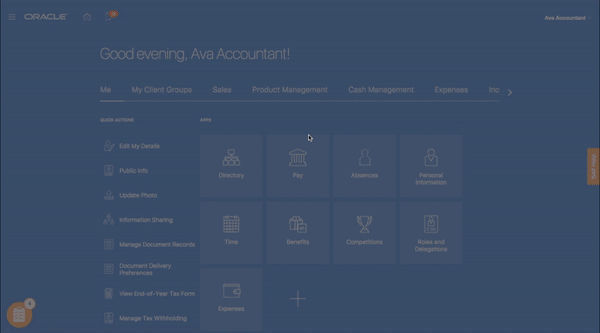
5. Analytics and reporting features to monitor adoption rates and identify areas needing support
With Whatfix, track and analyze end-user behavior with User Actions. This empowers IT teams to identify areas of end-user friction, map optimal user flows, build flows for different user cohorts, and more.
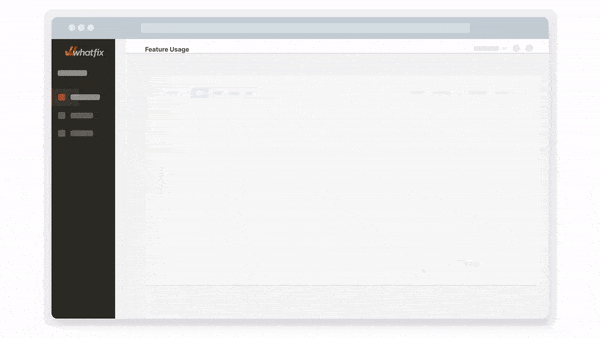
6. Feedback systems to collect real-time input
Whatfix incorporates end-user feedback opportunities directly into the user interface. This real-time feedback loop enables organizations to uncover issues quickly. Then, they can refine their approach to address them.
Whatfix empowers healthcare organizations to implement change more effectively and maximize the benefits. This comprehensive approach to digital adoption empowers healthcare workers to focus on what they do best.

Healthcare Software Clicks Better With Whatfix
Accelerate your healthcare change management efforts by enabling your employees and patients with contextual in-app guidance and constant real-time support via the Whatfix digital adoption platform (DAP).
Whatfix provides healthcare application owners and IT teams with a comprehensive no-code platform for enabling users, driving adoption, and achieving healthcare business outcomes with frictionless digital healthcare experiences.
With Whatfix:
- Easily create replicate sandbox environments for your healthcare applications for hands-on user training.
- Enable healthcare end-users with contextual, role-based in-app onboarding and training with Whatfix in-app guidance with experiences like Tours, Flows, and Task Lists.
- Provide on-demand self-help support for end-users with Whatfix Self Help and identify common troubleshooting issues with Guidance Analytics.
- Build sandbox environments for simulated hands-on healthcare training with Whatfix Mirror.
- Collect end-user feedback with Whatfix Surveys.
- Analyze end-user behavior to identify areas of digital friction and map optimal healthcare workflows with Whatfix Analytics.
- Understand how your healthcare technology is used and under-adopted by your employees and patients. This makes it easier to adjust software onboarding, training, support, and overall end-user adoption strategies—all to provide a seamless experience for every end-user that enables them with the right context and support to utilize new technologies and systems fully.






